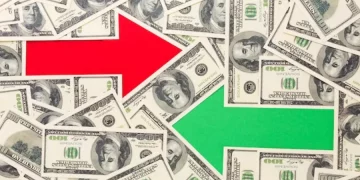5 Common Myths About Motor Insurance: Debunked!

Motor Insurance | goskat
Motor insurance is an essential part of owning and operating a vehicle. It provides financial protection in case of an accident, theft, or damage to your car. However, there are many myths and misconceptions surrounding this type of insurance that can cause confusion and lead to costly mistakes. In this article, we will debunk five of the most common myths about motor insurance and provide you with the facts you need to make informed decisions about your coverage.
Myth #1: Red cars are more expensive to insure
This myth has been around for a long time, and it’s easy to see why people believe it. Red cars are often associated with speed and reckless driving, which makes them seem like a higher risk to insurers. However, the color of your car has no impact on your insurance rates.
Insurance companies determine your rates based on a variety of factors, such as your driving record, the type of car you drive, and your age. The color of your car is not one of these factors. So, if you want to buy a red car, go ahead and do it! Just make sure you have the right coverage to protect yourself and your vehicle on the road.
Myth #2: Comprehensive coverage is always the best option
Comprehensive coverage is a type of insurance that covers damage to your car that isn’t caused by a collision, such as theft, vandalism, or natural disasters. While this type of coverage can provide valuable protection, it’s not always the best option for everyone.
Comprehensive coverage is typically more expensive than other types of insurance, such as liability or collision coverage. If you have an older or less valuable car, it may not be worth the extra cost to have comprehensive coverage. On the other hand, if you have a new or expensive car, this type of coverage can provide valuable peace of mind.
Before you choose your coverage, consider the value of your car, your driving habits, and your budget. Talk to your insurance provider to determine the best type of coverage for your needs.
Myth #3: Your insurance rates automatically go up after an accident
This is a common misconception among drivers, but it’s not entirely true. While it’s true that some insurance companies will raise your rates after an accident, this is not always the case.
Insurance companies determine your rates based on a variety of factors, including your driving record, the type of car you drive, and your age. If you have a good driving record and a history of responsible behavior, your rates may not go up after an accident.
However, if you have a history of accidents or traffic violations, your rates may increase. It’s important to talk to your insurance provider to understand how they determine rates and what you can do to keep them low.
Myth #4: Personal car insurance covers business use
If you use your car for business purposes, such as delivering goods or driving clients to meetings, you may assume that your personal car insurance will cover you. However, this is not always the case.
Most personal car insurance policies do not cover business use of your vehicle. If you use your car for business purposes, you should consider purchasing commercial auto insurance. This type of coverage is specifically designed for business vehicles and can provide valuable protection in case of an accident or other incident.
Myth #5: Your credit score doesn’t affect your insurance rates
Many people believe that their credit score has no impact on their insurance rates, but this is not entirely true. Insurance companies use a variety of factors to determine rates, including your credit score.
Studies have shown that people with lower credit scores are more likely to file claims and have an increased risk of accidents. As a result, insurance companies may charge higher rates to people with lower credit scores.
If you have a low credit score, it’s important to work on improving it. Pay your bills on time, reduce your debt, and check your credit report regularly to ensure accuracy.
The truth about motor insurance
Now that we’ve debunked some common myths about motor insurance, it’s important to understand the truth about this type of coverage. Motor insurance provides valuable protection in case of an accident, theft, or damage to your car. It’s important to choose the right type of coverage for your needs and budget.
When choosing your coverage, consider factors such as the value of your car, your driving habits, and your budget. Talk to your insurance provider to understand what types of coverage are available and what you can do to keep your rates low.
Tips for getting affordable motor insurance
If you’re looking for affordable motor insurance, there are several things you can do to keep your rates low. Here are some tips:
- Bundle your insurance policies: If you have multiple insurance policies, such as home and auto insurance, consider bundling them with the same provider. Many insurance companies offer discounts for bundling policies.
- Increase your deductible: Your deductible is the amount you pay out of pocket before your insurance kicks in. If you’re willing to take on a higher deductible, you can lower your monthly premiums.
- Shop around: Don’t settle for the first insurance provider you come across. Shop around and compare rates from multiple providers to find the best deal.
- Maintain a good driving record: Your driving record is one of the biggest factors that insurance companies consider when determining rates. Drive responsibly and avoid accidents and traffic violations.
Conclusion
Motor insurance is an essential part of owning and operating a vehicle. However, there are many myths and misconceptions surrounding this type of coverage. By understanding the truth about motor insurance and following these tips for getting affordable coverage, you can ensure that you’re properly protected on the road without breaking the bank.















